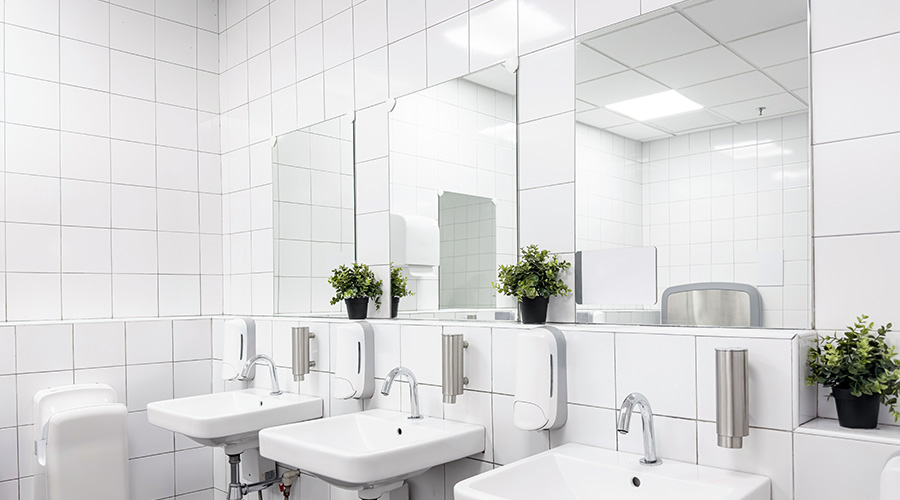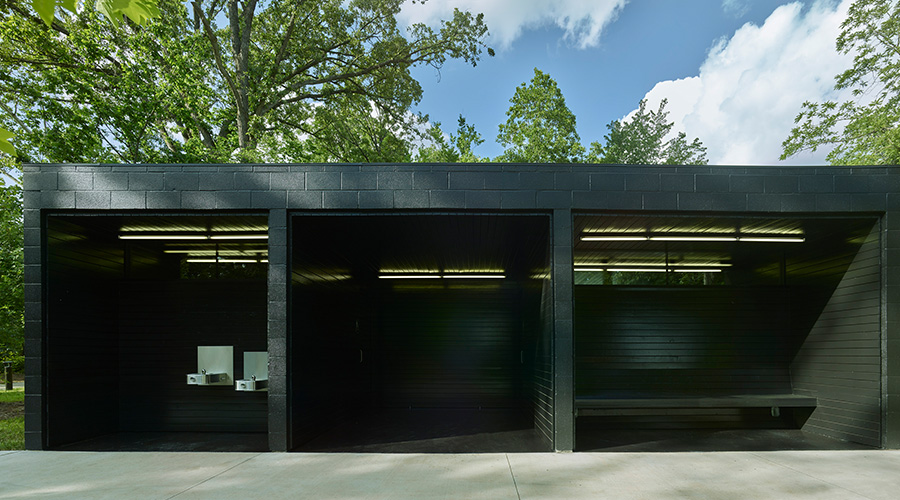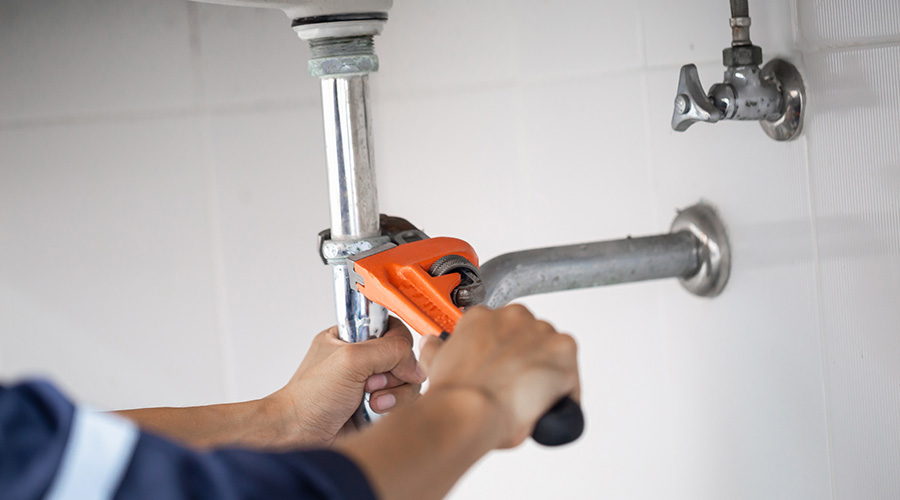Managers Consider Aesthetics, Maintenance When Specifying Restroom Products
Manufacturers are well aware of the high volumes of traffic restrooms must endure, as well as the greater opportunity for complaints from users.
“The most consistent statement I hear from people in maintenance is, ‘Don’t make me hear complaints about my washroom,’ “ Silk says.
To prevent that, manufacturers focus any changes in their products to address specific customer challenges. As a result, these days, managers specifying restroom products face an array of products that is large and complex and getting more so every day.
So given this scenario, how can they possibly make the right decisions? Merrill stresses the importance of weighing all factors, not just one or two. Managers need to understand the particular restroom itself as much as the product: How many people will use the washroom, whether in an school, airport terminal or movie theater?
How will housekeeping staff clean it? What are the aesthetic considerations? How much abuse and vandalism will the product have to endure?
To help managers address such questions, manufacturers have updated and upgraded many of their offerings. Silk points to his company’s electronic towel dispensers as an example of changes that aim to address the need for durability.
“There are no moving parts, no buttons, cranks or levers,” he says, adding the dispenser uses sensor technology to detect the user and advance the paper towel. “The maintenance need is greatly reduced, and the long-term durability is enhanced.”
The dispenser’s hands-free design also helps avoid cross-contamination, and the technology allows customers to adjust the size of towel dispensed, minimizing paper use and providing source reduction.
Sensor technology on urinals, toilets and faucets continues to have a major impact on other restroom products.
“We’re following suit with our paper- towel dispensers, and hand-towel dispensers,” Merrill says, adding the benefits go beyond user convenience. “As sensor technology becomes more reliable, the warranties have been extended.”
In some cases, managers are paying more attention to the issue of raw materials that go into the products they buy and the life-cycle considerations related to those materials.
“We recommend using stainless steel washing accessories,” says Alan Gettelman with Bobrick Washroom Equipment Co. “Stainless steel is 70 percent recycled material. And after maybe 20-30 years, if a manager wants to replace the equipment, they can recycle that stainless steel and put it back into new production.”
An often-difficult part of the decision-making process involves choosing between competing technologies that offer different benefits. The choice between electric hand dryers and paper-towel dispensers is one such instance. Consider hand dryers first.
“Hand dryers eliminate paper towels in restrooms,” Gettelman says. “This saves 95 percent of the cost of hand drying versus paper towels. It also reduces waste and litter in a restroom, which improves the appearance and reduces maintenance costs. Getting rid of paper towels also gets rid of waste-management issues — paper going into landfills and the cost of handling all that waste.”
Paper-towel dispensers also have merits.
“Building owners are beginning to look at using auto-roll paper towel dispensers, which reduce towel consumption. Patrons and users of washrooms don’t like to touch anything,” Gettelman says. “They’ll be satisfied with one length of paper towel that comes out, so they’re not pulling out stacks and handfuls of paper towels. Also, that reduction in cost reduces the cost of paper towels and reduces issues for waste management.”
As part of the education process related to environmental responsibility, manufacturers emphasize that sustainability is not simply one consideration in the process of specifying products. Instead, it results from a manager’s analysis of all elements of a product.
“If I’m building or replacing a middle school, which products should I choose?” Merrill asks. Some paper towel dispensers use 22-gauge steel, while others use 16-gauge-steel. Some are surface-mounted while others are fully recessed. Each feature will affect the product’s performance, durability, maintenance needs, and life-cycle cost.
“All of these decisions have a tremendous impact on sustainability.”
Related Topics:













